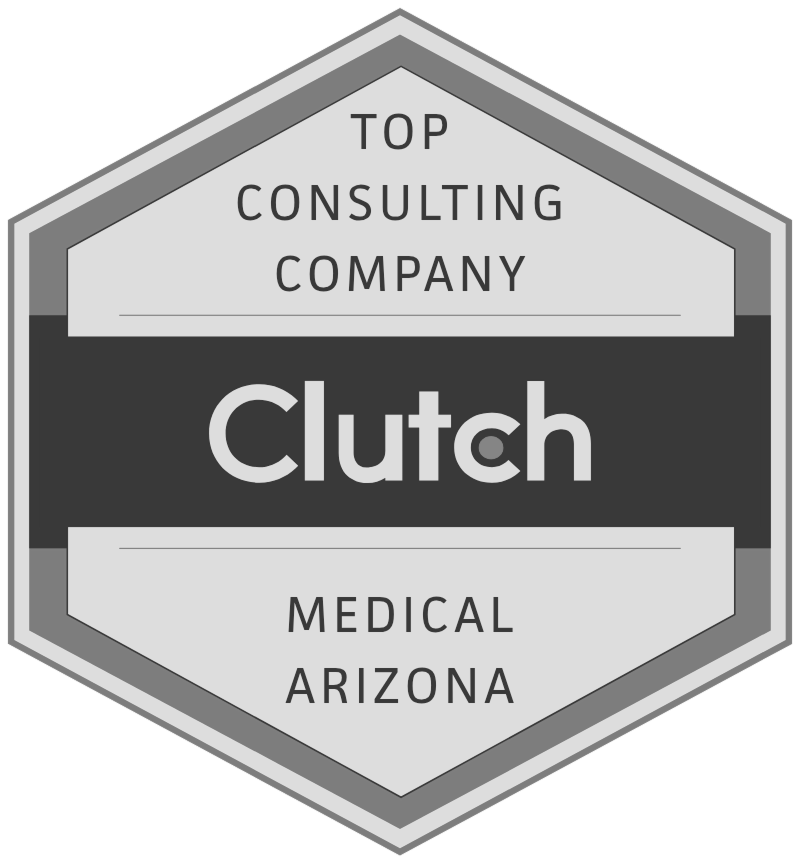How to Start a Mobile IV Hydration Business in 2025
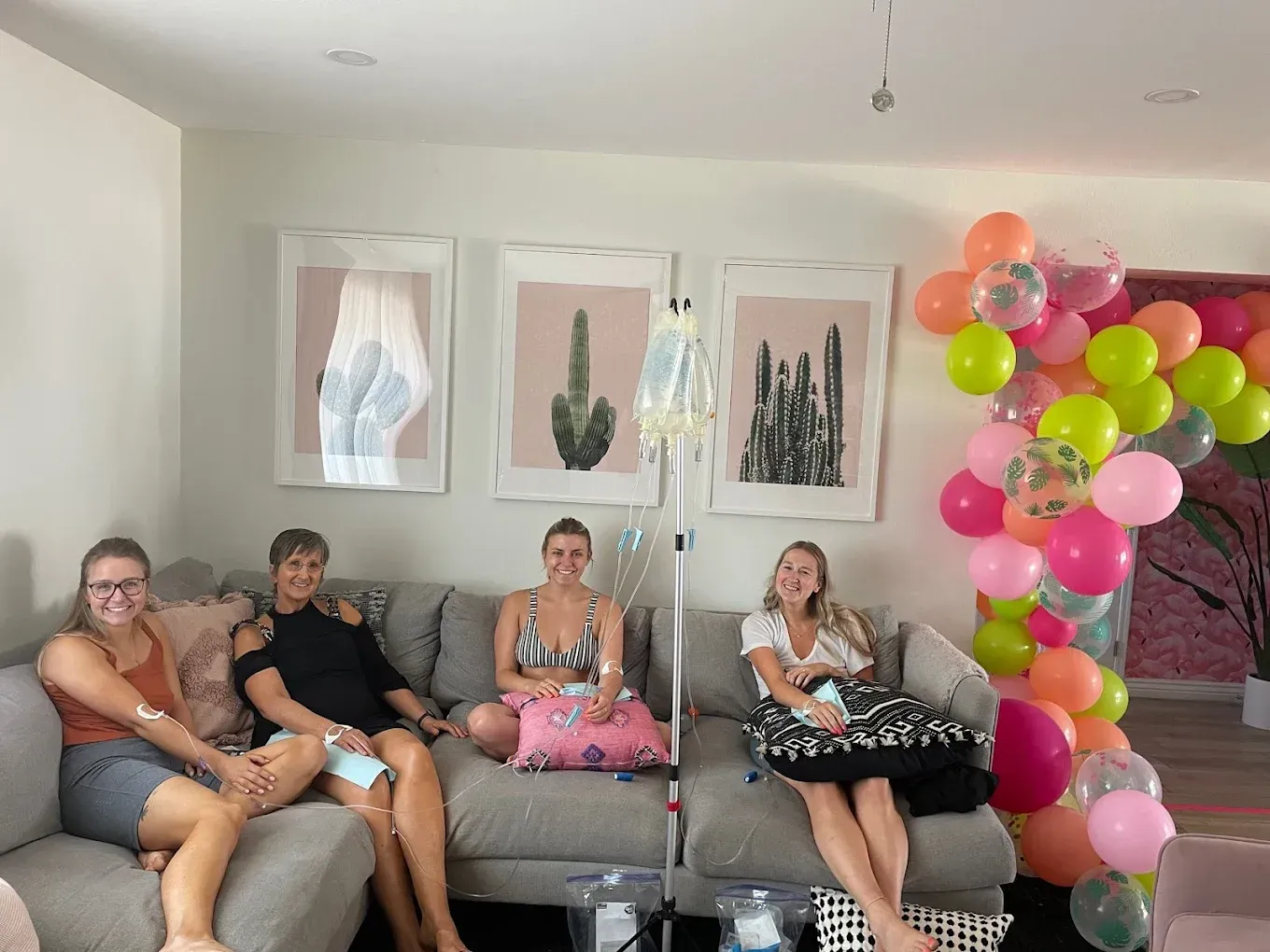
TABLE OF CONTENTS
Mobile IV hydration has moved from a luxury perk to a mainstream healthcare solution. Athletes, executives, and wellness-minded travelers all want rapid, on-site recovery. This guide breaks down how to start a mobile IV hydration business in 2025, step by step.
Conduct Comprehensive Market Research And Develop A Strategic Business Plan
Launching without solid data is guesswork. Whatever you do, don’t skip this step. It builds the foundation for every business decision you’ll make later.
Define Your Service Area
Start by mapping a primary radius of 20–30 miles around your intended headquarters. Confirm that the total population inside that ring meets or exceeds 700,000. Distance matters as much as headcount. A larger metro with heavy traffic can still erode nurse capacity.
We recommend using:
- United States Census QuickFacts for current population totals
- Data USA to download ZIP-level income and age breakdowns
- Google Maps Drive-Time Layer to estimate travel time at peak and off-peak hours
If feasible demand clusters lie beyond your core radius—college towns or resort areas—tag them as future expansion zones.
Gather Demographic And Psychographic Data
Mobile IV therapy buyers skew health-conscious and time-constrained. Confirm that your territory contains enough of these profiles:
- Median household income above $65,000
- Concentrations of professionals aged 25–54
- High density of gyms, boutique fitness studios, and health-food retailers
Supplement census data with:
- Claritas PRIZM lifestyle segments
- Facebook Audience Insights for local interest in wellness, running, or CrossFit
- Local chamber of commerce reports on corporate headquarters and event calendars
Perform A Gap-Focused Competitor Audit
List every provider that appears on the first two pages of Google for “IV therapy near me” and related terms. For each competitor, record:
- Average Google and Yelp rating plus total review count
- Published menu, add-on pricing, and membership options
- Stated service window (for example, “arrives within 90 minutes”)
- Booking experience speed—measure clicks from homepage to confirmation
Look for common weaknesses:
- Slow web pages with no online payments
- Limited hours or next-day scheduling only
- Reviews citing missed follow-ups or hidden fees
Those gaps become your differentiation checklist: faster response, transparent pricing, and automated post-visit care.
Quantify Demand With Search-Volume Analysis
High local search interest confirms intent to buy. Collect monthly search volume for core terms:
- “IV therapy [city]”
- “Mobile IV hydration”
- “NAD drip”
Use Google Keyword Planner, SEMrush, or Ahrefs. Then, check Google Trends for three-year growth curves. A steady upward slope plus at least 1,000 combined monthly searches inside your metro signals adequate organic demand.
Validate Pricing And Willingness To Pay
“Secret shop” top competitors by phone or live chat. Ask for base drip cost, travel fee, and group discounts.
Track:
- Median price for a standard hydration drip (often $169–$189)
- Upsell frequency—do they push vitamin boosters or memberships?
- Service fees for off-hour requests or mileage beyond a set radius
Compare those figures with your projected cost of goods (about $40 per drip). That way, you can ensure you enter at a premium position without undercutting your margins.
Translate Findings Into A Strategic Business Plan
Compile insights into a concise, data-driven document. At minimum, include:
- Executive Summary: problem, solution, and revenue thesis
- Market Analysis: population, demographics, and keyword demand
- Competitor Gap Matrix: features you will outperform on day one
- Entity Structure: LLC, PLLC, or physician-owned professional corporation as state law dictates
- Financial Projections: three-year P&L, cash-flow statement, and break-even timeline
- Startup Budget: inventory, insurance, legal fees, website, and marketing forecast
- Risk and Mitigation: regulatory shifts, supply shortages, or staffing gaps
OMG Marketing recommends adding scenario modeling—best, base, and worst case—to stress-test funding needs. Investors and lenders view this diligence as a credibility marker.
Honestly, you need to complete this step before ordering a single saline bag. A research-anchored business plan guides every license application, marketing investment, and staffing hire that follows.

Navigate the Legal Landscape and Ensure Compliance in Mobile IV Therapy
Launching a healthcare venture means zero shortcuts on regulation. Each requirement protects patients, preserves your license, and shields your business from fines.
Understand Corporate‐Practice‐Of‐Medicine Rules
State law dictates who may own a medical entity and how profits flow.
- Strict States: Texas and California insist that a physician hold majority ownership in a professional corporation or PLLC. Non-clinician founders typically operate a separate management services organization for marketing, payroll, and administrative support.
- Moderate States: Florida allows non-physicians to own an LLC if a licensed medical director oversees all clinical care.
- Lenient States: Ohio and several others let nurse practitioners or non-clinicians own the practice outright, though physician oversight remains industry best practice.
Research your state board’s latest guidance. Then, structure the company accordingly.
Secure Medical Oversight And Good Faith Exams
Most states require a supervising physician to:
- Approve IV therapy protocols
- Conduct or delegate Good Faith Exams before the first treatment
- Review charts and adverse-event reports on a scheduled cadence
Telehealth GFEs are acceptable in many jurisdictions and save travel time. Record each exam in a HIPAA-compliant EHR.
Meet Licensing And Registration Requirements
Comply with three layers of paperwork:
- Entity Registration: File your LLC, PLLC, or professional corporation with the Secretary of State.
- Local Business License: Many counties require a separate operating permit.
- Provider Credentials: Verify every nurse’s state license and maintain copies on file.
If you plan to operate across state lines—common for event bookings—each nurse must hold a license valid in the treatment state.
Maintain HIPAA And OSHA Compliance
HIPAA governs patient privacy. Follow these steps:
- Use encrypted, BAA-backed software for scheduling, charting, and messaging.
- Limit PHI access to need-to-know staff.
- Provide a Notice of Privacy Practices to every new client.
OSHA protects staff safety. You must:
- Train nurses on bloodborne pathogen standards.
- Provide puncture-resistant sharps containers.
- Contract a licensed medical-waste hauler or mail-back service.
Document every training session and disposal pickup. Regulators frequently request those records.
Protect With Insurance And Documentation
Carry four policies:
- Professional Liability (Malpractice)
- General Liability
- Cyber Liability for data breaches
- Workers’ Compensation once you hire employees
Retain comprehensive clinical documentation. Each chart should include:
- Client intake and consent
- Good Faith Exam note
- Infusion details: formula, dose, start and stop times
- Post-treatment assessment and any follow-up instructions
Accurate records are your first defense if a claim or audit arises.
Engage A Healthcare Attorney Early
Frameworks shift. For example, Texas clarified IV ownership rules in 2023, and several boards tightened Good Faith Exam timelines last year. A lawyer who focuses on medical startups will:
- Draft compliant physician-director agreements
- Review marketing copy for scope-of-practice issues
- Advise on multi-state telehealth protocols
Budget at least $1,000 for initial consultations. That expense is minor compared with penalties that can reach $10,000 per infringement.
Expert Web Design and Development for Maximum Conversions
A high-performing website is your storefront, booking desk, and brand ambassador combined. It’s often the first impression you’ll make on your target clients. Don’t cut corners on it.
Prioritize Mobile-First User Experience
96% of IV therapy bookings now happen over the phone. Design mobile layouts first, then scale up to desktop. Use large tap targets, clear font hierarchy, and fast-loading images. Aim for less than two-second load times on 4G. Every extra second costs conversions.
Build A Conversion-Focused Structure
Organize content so visitors move from curiosity to booking in three clicks or fewer.
- Hero Section: concise value statement, “Book Now” button, and trust badges.
- Services Grid: each drip card shows ingredients, benefits, and price.
- Proof Layer: star ratings, client photos, and short testimonials.
- FAQ Preview: top questions collapsed; full list on a separate page.
- Sticky Booking Banner: persists as users scroll.
Apply checkout logic from e-commerce leaders. Remove optional fields and auto-detect ZIP codes. Offer Apple Pay or Google Pay for speed.
Elevate Trust With Rich Content
Show, don’t just tell. Use:
- High-resolution nurse action shots to convey professionalism.
- Short explainer videos demonstrating a painless IV start.
- Infographics outlining drip ingredients and benefits.
Display transparent pricing next to each service. Hidden fees erode trust and hurt SEO click-through rates.
Integrate A Robust Booking Stack
Choose HIPAA-ready tools such as Acuity Scheduling, Square Appointments, or Jane. Your stack should:
- Auto-confirm bookings by email and SMS
- Collect secure payments at the time of scheduling
- Sync with Google Calendar and dispatch reminders to nurses
- Trigger follow-up surveys for review generation
You’ll want to embed the booking widget above the fold on every service page. This will maximize conversions.
Optimize For Speed, SEO, And Accessibility
Compress images, lazy-load videos, and deploy a content delivery network (CDN). Use schema markup so Google surfaces rich snippets. Confirm color contrast, alt text, and keyboard navigation to meet WCAG 2.1 AA guidelines.
Secure Data And Maintain Compliance
Install an SSL certificate and enable two-factor authentication. Then, sign a business associate agreement with your hosting provider. Route intake forms through encrypted channels. Do not store credit card data locally. Instead, rely on PCI-compliant gateways.
A mobile-first, conversion-optimized site converts clicks into booked drips around the clock. Invest in clear layouts, rich proof, and seamless booking tech. Your website will become your top revenue engine, just as it did for Arizona IV Medics after OMG Marketing’s redesign.
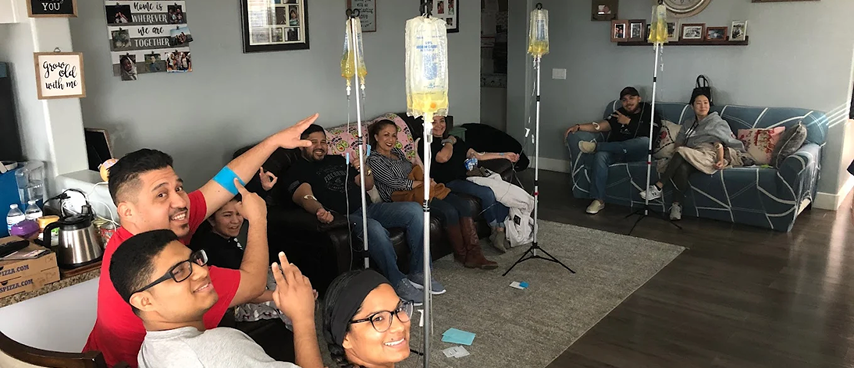
Dominate Digital Marketing Through SEO And Targeted Ads for Mobile IV Therapy
A disciplined digital strategy makes your phone ring before competitors know you exist.
Search Engine Optimization For Sustainable Traffic
Thorough keyword research comes first. Focus on high-intent phrases clients already use:
- “Mobile IV therapy near me”
- “IV hydration services”
- “IV drip therapy [city]”
- “NAD drip [city]”
Group terms by theme, then assign each group a unique page to avoid keyword cannibalization. Place the target phrase in the H1, first 100 words, one H2, and the meta title. Keep URLs short and descriptive, for example /iv-therapy-atlanta.
Update the blog weekly with concise posts that answer common questions. Internally link each post to its closest service page to pass relevance and authority.
Local SEO: Own The Map Pack
Claim and verify your Google Business Profile. Use the exact NAP—name, address, phone—across Yelp, Healthgrades, and local directories. Upload geotagged photos of nurses in branded gear and your mobile kit in action.
After each appointment, trigger a review request by SMS within 24 hours.
Profiles with 50+ reviews and a 4.8-star average consistently rank in the top three map results. Respond to every review (positive or negative) within two days to show active customer care.
Paid Search: Immediate Visibility With Google Ads
Organic growth matures over months. On the other hand, Google Ads drives same-day bookings.
On Google Ads, build three tightly themed campaigns:
- Brand terms (your company name)
- Core services (“IV therapy near me,” “mobile IV hydration”)
- High-value drips (“NAD drip,” “hangover IV”)
Set a 15-mile radius around your base. Use exact and phrase match to control spend. Write ad copy that highlights speed, licensing, and transparent pricing.
Example:
Headline: “Nurse-Led IV Hydration In 60 Min”
Description: “Licensed nurses. Book online, pay upfront. Serving Dallas, Plano, and Frisco.”
Monitor search term reports twice a week. Add irrelevant queries as negatives and pause keywords with a cost per lead above your target. OMG Marketing clients often start near $35 per lead and refine to $20 within two months.
Social Media Marketing: Engage And Retain
Instagram and Facebook remain the strongest local channels.
Post three times weekly:
- Behind-the-scenes nurse setup
- Client testimonials with written consent
- Quick Reels explaining drip benefits
Boost top-performing posts to users within 10 miles who follow fitness, wellness, or travel pages. Use Meta Ads retargeting so visitors who left the booking page see a reminder ad within 24 hours.
Track reach, engagement, and assisted conversions in the Meta dashboard. Adjust creative every two weeks to avoid ad fatigue.
Track, Test, And Optimize
Combine SEO, PPC, and social metrics in one dashboard. Key indicators include:
- Organic sessions and top landing pages
- Cost per booked appointment from Ads
- Review count and average rating
- Social reach and click-throughs
Review data monthly. Double down on channels with the best cost-to-revenue ratio and refresh underperforming assets.
A cohesive digital marketing strategy keeps bookings steady and scalable.
OMG Marketing’s integrated approach has delivered over 80,000 leads for IV providers. The same playbook can put your brand on top in 2025.
Strategic Staffing And Building An Exceptional Medical Team
Your mobile IV brand lives or dies on the professionalism of the clinicians who knock on a client’s door. Start by defining clear job scopes so responsibility never blurs. Registered nurses carry out the IV insertion, monitor every drip, and complete the chart.
Nurse practitioners perform Good Faith Exams via telehealth, write or renew standing orders, and provide clinical backup for field nurses. A physician medical director signs protocols, audits records on a set schedule, and remains available for urgent consults. With these lines drawn, every provider knows exactly where practice authority begins and ends.
Recruiting High-Caliber Clinicians
Cast the net where IV expertise is routine. Emergency department and ICU nurses typically log thousands of sticks and are unfazed by hard veins. Post openings in hospital alumni Facebook groups. You can also try state nursing association newsletters and travel nurse LinkedIn circles.
The best ads highlight what clinicians value. (Ex. Autonomous work, predictable pay per visit, and a company that invests in continuing education)
During screening, maintain a layered filter. Verify an active, unrestricted state license and any national certifications such as ACLS.
Confirm hands-on experience. Aim for a minimum of two years in acute or infusion care or at least 1,000 documented IV starts. Order a federal and state background check.
Afterward, invite the candidate to a structured interview focused on scenario-based questions:
- “Describe your protocol for a client who turns pale and diaphoretic mid-infusion.”
- “How do you explain a Good Faith Exam to someone who is skeptical about telehealth?”
Responses reveal clinical judgment and bedside manner in equal measure.
Onboarding And Skills Validation
New hires spend day one in orientation covering HIPAA, OSHA sharps standards, and your charting software. Next, they shadow two live appointments. They perform three supervised drips while a trainer scores technique, aseptic prep, and client communication.
A written quiz on electrolyte compatibility and anaphylaxis management closes the competency loop. Only nurses who pass both practical and written checks receive independent shift assignments.
Sustaining Excellence
Clinical skill decays without practice, so schedule quarterly refreshers. Use these sessions to drill ultrasound-guided IV starts, review any protocol changes, and run mock emergencies.
Provide each clinician with a continuing education stipend to attend IV therapy or emergency response courses. ($300 per year is typical.) Tie stipend eligibility to completing chart audits on time. This keeps compliance top of mind.
Retention hinges on culture as much as pay. Offer slightly above-market per-visit rates and rotate weekend duty fairly to prevent burnout. Celebrate 5-star reviews in a team chat and share monthly metrics. That way, everyone will see how individual performance drives company reputation. First-stick success rate, on-time arrival percentage, and repeat client ratio are great metrics to track.
By treating recruitment and training as core operations rather than back-office tasks, you build a team that consistently delivers safe, empathetic, and efficient care. That consistency translates into word-of-mouth referrals and 5-star reviews. You’ll have the credibility required to command premium pricing.
Reliable Inventory Management And Supplier Relationships
Uninterrupted supply keeps appointments on time and margins intact. Start by cataloging every consumable—IV fluids, catheters, tubing, alcohol swabs, vitamin vials, sharps containers, and emergency medications.
Assign each item a reorder threshold. For example, when saline bags drop to 10 units, the system triggers a purchase order. Simple spreadsheet trackers work at launch, but most operators graduate to cloud tools like Sortly or EZOfficeInventory once monthly volume surpasses 200 drips.
Choose Primary And Backup Vendors
Relying on a single distributor invites trouble during back orders. Select a primary national supplier—McKesson, Medline, or Henry Schein—for bulk pricing and broad catalogs.
Then secure at least one secondary source, such as Concordance Healthcare or a regional pharmacy. You’ll use these for critical items like 1-liter saline and butterfly needles.
- Primary vendor supplies 80% of routine stock at contract rates.
- Backup vendor covers rush orders and shortage gaps within 48 hours.
Negotiate freight terms upfront. Free ground shipping on orders over $500 can shave thousands off annual COGS.
Implement A Weekly Inventory Cycle
Conduct a visual count every Monday morning and log quantities. Then, compare against booking forecasts for the next seven days. Adjust orders to cover the greater of two weeks’ average consumption or the highest single-day projection.
Maintain Cold-Chain And Expiry Control
Many vitamin additives, especially glutathione and NAD⁺, require refrigeration. Use a dedicated medical-grade fridge with a digital temperature logger. Document twice-daily readings. Auditors look for these logs.
Rotate stock so the earliest expiration dates leave first. Dispose of any vial within 30 days of puncture, even if the label shows a longer shelf life.
Track Lot Numbers For Quality Assurance
Record lot and batch numbers for each fluid bag and vitamin vial in the client’s chart. Should the FDA issue a recall, you can identify affected patients within minutes. This practice also strengthens your defense in the rare event of an adverse reaction investigation.
Reconcile Inventory And Financials
Match purchase orders to supplier invoices and charted usage at month-end. Variances over five percent signal shrinkage or recording errors. Tight reconciliation keeps the cost-of-goods accurate and flags any pilferage early.
Reliable inventory is more than a back-office task. It is a frontline promise that every booked client receives timely, professional care. By pairing disciplined counts with dual-source suppliers and strict cold-chain control, you protect both revenue and reputation.
Our experts at OMG Marketing recommend integrating inventory metrics—turnover rate, stock-out frequency—into your KPI dashboard so operations and marketing stay aligned on growth capacity.
Establishing Medical Directorship and Good Faith Exam Protocols
Physician oversight underpins both legal compliance and clinical credibility. Begin by recruiting a board-certified MD or DO. You’ll want someone trained in emergency medicine, internal medicine, or anesthesiology. They need to hold an active license in every state you will service.
During the interview, confirm three essentials: prior experience with IV micronutrient therapy, readiness for on-call escalation, and fluency with telehealth platforms. Typical compensation for part-time supervision ranges from $750 to $1,500 per month and scales with chart-review volume.
Draft a written Medical Director Agreement and have it vetted by a healthcare attorney. The document should spell out:
- Scope of Duties: protocol approval, standing-order signatures, periodic chart audits
- Availability Standards: response to urgent calls within 15 minutes; routine questions within 24 hours
- Liability Coverage: minimum malpractice limits for both physician and entity
- Termination Terms: notice period and hand-off procedures if either party exits
With a director in place, design a Good Faith Exam pipeline that protects patients and satisfies state boards. Most jurisdictions accept telemedicine, so embed a brief video consult before the first infusion and annually thereafter.
Tele-GFE Workflow
- Client completes a secure, online medical-history questionnaire.
- Scheduling software triggers an alert to the NP or medical director.
- A five-minute HIPAA-compliant video call confirms ID, allergies, and contraindications.
- Provider documents findings and electronically signs the treatment order.
- EMR auto-flags the record to expire on the required renewal date.
Every GFE note must include provider name, date, chief complaint, pertinent history, and a clear statement that IV therapy is medically appropriate. Save each note in your encrypted chart; regulators often audit these files first.
During quarterly quality meetings, review a random sample of GFEs with your medical director, log any deviations, and update protocols immediately.
A structured medical directorship model with airtight tele-GFE documentation keeps your practice inside regulatory guardrails. It reassures clients that safety is paramount and frees nurses to focus on delivering a high-touch experience.
Treating oversight as a living system (not a one-time checkbox) future-proofs your business. It reinforces the trust that drives repeat bookings.
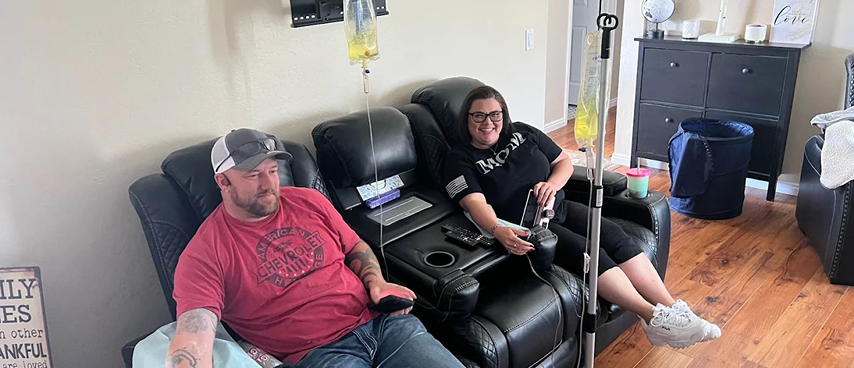
Comprehensive Risk Management and Insurance Coverage
Risk management starts with the right insurance. However, it succeeds through daily safeguards that stop incidents before they start.
Carry a layered policy stack:
- Professional Malpractice: at least $1 million per claim / $3 million aggregate for each clinician and the entity
- General Liability: covers property damage or bodily injury at client sites
- Cyber Liability: protects against HIPAA breaches, ransomware, and data-loss claims
- Workers’ Compensation: mandatory once payroll meets state thresholds
Premiums vary by state and volume. Most operators spend $1,500–$4,000 a year for full protection. Insurance absorbs financial shock. Prevention preserves reputation.
Standardize patient safety procedures into a repeatable checklist. Each visit begins with identity verification, allergy review, and confirmation that the Good Faith Exam is current.
Emergency readiness matters just as much. Equip every field bag with:
- Epinephrine auto-injector
- Diphenhydramine ampule
- Blood-pressure cuff and pulse oximeter
Include a laminated quick reference card. It should outline step-by-step responses for infiltration, anaphylaxis, and vasovagal syncope.
Require nurses to run through these scenarios during quarterly skills refreshers. Muscle memory reduces panic when seconds count.
Data security is another pillar. Use HIPAA-compliant scheduling and charting platforms. Enforce two-factor authentication and limit PHI access to need-to-know staff.
Back up encrypted databases nightly to an off-site location. A documented breach response plan turns chaos into a managed workflow if a cyber event occurs. Know who will call the insurer and notify affected clients.
Finally, adopt a quality-assurance loop. Review incident reports and random charts monthly with the medical director. Track metrics such as first-stick success rate, adverse-event frequency, and documentation completeness.
By embedding risk controls into every layer (people, process, and policy), you safeguard the business you worked hard to build. OMG Marketing advises clients to track risk metrics alongside revenue. Healthy numbers in both columns signal a practice poised for steady, sustainable growth.
Continuous Monitoring, Analysis, And Optimization
Data transforms a mobile IV start-up into a scalable healthcare company. Commit to a performance review cycle that blends financial, clinical, and marketing metrics. The core numbers to watch fall into four categories:
Revenue and Growth measure commercial traction:
- Monthly gross revenue and month-over-month growth
- Average order value (AOV) broken out by drip type and add-ons
- Membership ratio—the percentage of sales tied to recurring plans
Patient Satisfaction reflects brand health. Capture net promoter score through a two-question SMS survey sent 24 hours post-visit. Track review volume and star rating on Google. A sudden dip flags service lapses before they snowball.
Operational Efficiency shows whether resources keep pace with demand:
- First-stick success rate (goal: 90 percent or higher)
- On-time arrival percentage across all appointments
- Supply stock-out incidents; anything above two per quarter signals inventory controls need tightening
Clinical Outcomes protect compliance and reputation:
- Adverse-event rate per 1,000 infusions
- Chart-completion accuracy—verified during monthly audits with the medical director
Pull numbers from integrated dashboards. QuickBooks or Xero deliver clean revenue lines. Google Analytics, Search Console, and Meta Business Suite cover marketing funnels. Export everything into a single Google Data Studio or Power BI report to see trends at a glance.
During the first week of each month, hold a one-hour analytics meeting. Present the dashboard, highlight deltas, and identify root causes.
If cost-per-lead spiked, revisit keyword bids or ad copy. A slip in first-stick success could prompt refresher training. Always pair every metric drop with a specific action item, owner, and completion date.
Document changes and review outcomes at the next cycle. That feedback loop (measure, adapt, repeat) locks in a culture of continuous improvement. In fast-moving wellness markets, the practice that iterates fastest wins sustained advantage.
Scaling Your Mobile IV Hydration Business
Growth should feel controlled, not chaotic. Begin with capacity math:
- Let’s say your existing nurses operate at 80% or higher utilization for three consecutive months. Patient satisfaction holds. In this case, demand outstrips supply.
The simplest lift is adding another full-time RN and duplicating your proven kit configuration. Keep one spare infusion bag on each route to absorb same-day add-ons without shorting later clients.
Territory expansion comes next. Map zip codes just beyond your core radius and overlay current booking density. Select the area with both high search volume and minimal drive-time overlap.
Launch a city-specific landing page 60 days before service starts. Follow it with a targeted Google Ads restricted to that zone.
Service innovation widens the average order value. Survey recurring clients quarterly. If many request post-infusion vitamin packs or immunity booster shots, pilot the add-on for 30 days. Track attach rate and margin.
A successful test graduates to the permanent menu. A sluggish one retires quietly. Use the same test-and-measure loop for higher-ticket drips like NAD⁺ or glutathione pushes.
Complementary offerings deepen brand loyalty. Three low-infrastructure options:
- Tele-wellness consultations: a nurse practitioner reviews lifestyle factors and suggests drip cadence.
- At-home lab draws: basic panels inform personalized infusion plans.
- Subscription supplement bundles: recurring shipments of oral vitamins between drips.
Each adds revenue without new real estate.
Fleet scaling may follow. Upfit a sprinter van into a two-chair mini-clinic for corporate visits and event bookings. Calculate the break-even point in drips per day and schedule pop-ups at gyms or festivals to accelerate volume.
Financing larger leaps—multiple vans or interstate launches—often requires outside capital. Present lenders or investors with the data trail: month-over-month revenue growth, retention rate, and demonstrated success in one expansion market.
Finally, codify your playbook. Document SOPs, onboarding checklists, and marketing templates. A repeatable operating manual turns local success into a scalable platform, whether you grow company-owned branches or franchise later.
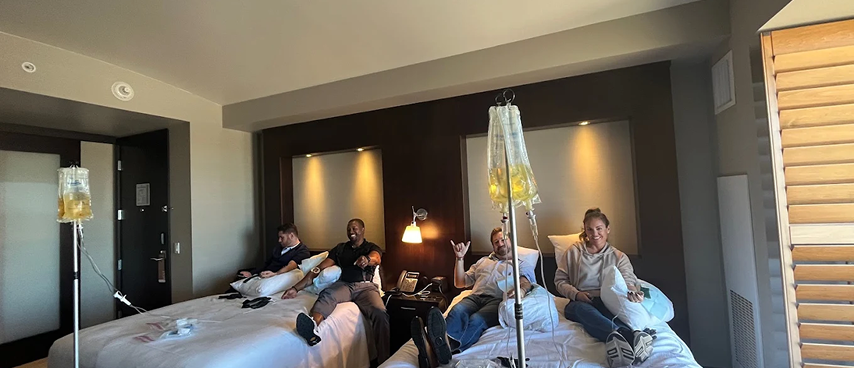
Partner with OMG Marketing to Start a Mobile IV Hydration Business in 2025
Building a mobile IV hydration company involves more than medical skill. You need a lot of things, actually:
- A high-conversion website
- Compliant funnels
- Google reviews flowing in daily
- A payroll that expands only when data proves demand.
OMG Marketing delivers that full stack, so you can start a mobile IV hydration business in 2025 without any doubts.
Our team offers:
Web Development and UX: mobile-first sites that cut booking friction and raise average order value.
SEO and Paid Media Expertise: city-specific pages, schema markup, and precision Google Ads that keep cost per lead below $25.
Operational Consulting: staffing models, inventory controls, and Good Faith Exam workflows refined through thousands of client appointments.
Case studies prove the formula:
Arizona IV Medics scaled from regional provider to category leader after a 526% traffic surge and 65k booked appointments.
Pure IV Utah moved from zero revenue to $70,000 per month in three years.
RevIVe Mobile IV booked 2,000 appointments in 15 months while slashing acquisition costs. Each win followed the same blueprint you have just read.
If you want similar momentum, let’s talk. We begin with a free strategy session that benchmarks your current state, identifies the fastest revenue levers, and outlines a 90-day action plan.
From there, we handle the heavy lifting—site builds, campaign management, and staff-training collateral. That way, you can focus on delivering safe, high-quality care.
The mobile IV market is expanding quickly, but early movers with disciplined systems will capture the lion’s share. By applying the steps in this guide and partnering with OMG Marketing, you secure a data-driven path to launch, growth, and long-term profitability.
Ready to accelerate?
Contact OMG Marketing today and turn your mobile IV vision into measurable results.
Frequently Asked Questions (FAQs)
How Much Does It Cost To Start A Mobile IV Hydration Business?
Most U.S. operators launch for $11,000–$38,000. The lean end covers entity filing, minimal inventory, and a basic website; the higher end funds multiple nurses, a custom booking stack, and aggressive marketing. Your exact spend depends on state licensing fees, supply choices, and ad budget.
What Licenses Are Needed For Mobile IV Services?
You need a business entity (LLC, PLLC, or physician-owned professional corporation), a medical-director agreement, and active RN or NP licenses for every clinician. Many counties also require a local business license. States mandate Good Faith Exams, so equip a HIPAA-compliant telehealth platform before treating patients.
How Do I Find Clients For My Mobile IV Startup?
Start with local SEO: city-specific landing pages and a verified Google Business Profile packed with five-star reviews. Layer geo-targeted Google Ads for “IV therapy near me,” then retarget site visitors on Instagram and Facebook. Referral incentives—$25 credits for both parties—turn early customers into a steady lead source.
How Much Can A Mobile IV Therapy Business Earn?
An owner who delivers 100 drips a month at a $199 average sale and maintains 75% gross margin can clear $10,000–$15,000 after fixed costs. Adding memberships, group events, and higher-ticket drips like NAD⁺ pushes profit even higher.
Is Mobile IV Therapy Profitable In 2025?
Yes. The North American market is growing at about 8% annually, and consumable costs stay near $40 per drip. Providers with premium pricing, tight marketing, and strong retention consistently hit 60–80 percent gross margins.
Do I Need A Physician On-Site For Every Treatment?
No, in most states, a supervising physician writes standing orders and reviews charts, while RNs perform the infusions. A remote Good Faith Exam and clear escalation protocol meet compliance without adding on-site physician costs.
How Long Does It Take To Break Even?
Moderate-budget clinics—around $25,000 invested—often hit cash breakeven in four to six months once monthly volume reaches 100 drips. Aggressive marketing and spotless online reviews accelerate that timeline.
Still have questions? Our experts at OMG Marketing will help you map costs, licensing, and client acquisition tactics for your specific market.


